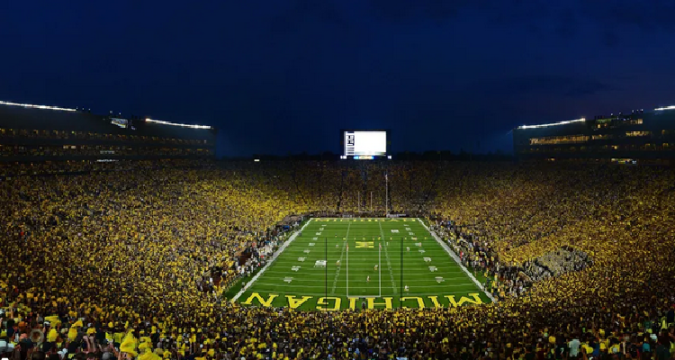
Football stadiums have always been the heart of the sport, acting as more than just structures of concrete, steel, and seats. These grand arenas hold the memories of unforgettable matches, the roar of impassioned fans, and the deep-rooted love for the game. Around the world, some stadiums stand out due to their immense size, historical significance, and architectural grandeur, making them true giants in the world of sports. Let’s take a journey through some of the world’s largest football stadiums, where football fans gather by the thousands, creating unforgettable atmospheres of unity, energy, and excitement.
1. Rungrado 1st of May Stadium, Pyongyang, North Korea
The Rungrado 1st of May Stadium holds the title as the largest football stadium in the world by capacity, able to seat a staggering 114,000 spectators. Situated on Rungra Island in the Taedong River, the stadium’s unique design is inspired by a magnolia blossom, with 16 arches that form a ringed roof. Completed in 1989, it is a symbol of North Korean pride and often used for mass games, political rallies, and cultural events. Football matches, especially international friendlies, take on an almost theatrical element here, given the country’s unique approach to sports and pageantry. Beyond football, the stadium’s significance lies in its cultural impact and architectural marvel, embodying the ambition and character of the host country.
2. Michigan Stadium, Ann Arbor, USA
Known as “The Big House,” Michigan Stadium is primarily a college football stadium for the University of Michigan Wolverines but also hosts soccer matches, including international friendlies and popular club teams. With a capacity of 107,601, it’s the largest stadium in the United States and ranks second in the world. The stadium has hosted record-breaking events, including a match between Real Madrid and Manchester United in 2014 that attracted over 109,000 spectators. The Big House is renowned not only for its size but for the electrifying experience it offers. Its steep seating angle brings fans closer to the action, making for a uniquely immersive experience.
3. Melbourne Cricket Ground (MCG), Melbourne, Australia
The Melbourne Cricket Ground, or simply the MCG, is an iconic sports venue with a capacity of 100,024. Although it’s primarily known for cricket and Australian rules football, the MCG is no stranger to hosting international soccer games. Its impressive size and structure, as well as its open bowl design, provide fans with excellent views from every angle. Established in 1853, the stadium has undergone several renovations, modernizing it while retaining its historic charm. The MCG holds a special place in Australian sports culture and often welcomes international matches that draw thousands of passionate fans.
4. Camp Nou, Barcelona, Spain
Home to FC Barcelona, one of the most successful and popular football clubs globally, Camp Nou is a legendary stadium with a capacity of around 99,354. Built in 1957, it has been the site of countless historic matches, from La Liga and Champions League battles to international fixtures. Beyond its capacity, Camp Nou is celebrated for its rich history, breathtaking design, and the deep connection it fosters between fans and players. A renovation is planned to increase its capacity further, which will likely solidify its position as one of the greatest football venues worldwide.
5. FNB Stadium, Johannesburg, South Africa
The FNB Stadium, also known as Soccer City, is the largest stadium in Africa with a capacity of 94,736. It gained international attention during the 2010 FIFA World Cup, hosting both the opening match and the final. The stadium’s design was inspired by an African pot known as a “calabash,” giving it a unique and iconic look. The FNB Stadium is more than just a football venue; it’s a symbol of unity and pride in South Africa, often hosting significant events, including concerts and political gatherings. The stadium’s electrifying atmosphere, particularly during international matches, makes it one of the most memorable places to watch a football game.
6. Azteca Stadium, Mexico City, Mexico
Estadio Azteca, with a capacity of 87,523, is a legendary stadium in world football and has hosted two FIFA World Cup finals: in 1970 and 1986. Known as the home of Club América and the Mexican national team, it’s a cauldron of sound and energy during matches. The stadium’s elevation, located over 7,200 feet above sea level, makes it a challenging venue for visiting teams. In addition to its size and atmosphere, the Azteca is steeped in history, with the famous “Hand of God” goal by Diego Maradona happening on its pitch.
The Cultural Impact of These Stadiums
Each of these stadiums is much more than a structure; they’re vibrant cultural landmarks. From the massive stands of Rungrado to the unique design of Soccer City, these stadiums embody the local heritage, the passion for the sport, and the memories of millions of fans. Watching a game in any of these stadiums is a bucket-list experience for football enthusiasts, capturing the magic and thrill of being part of a monumental sporting tradition.